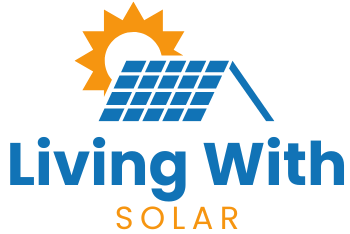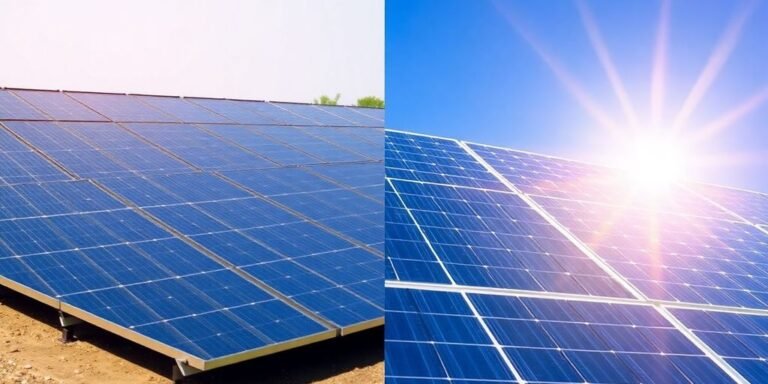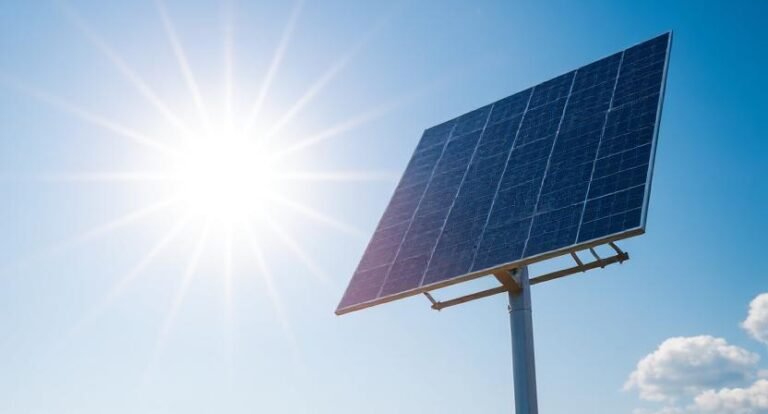When considering how to calculate your home’s solar energy needs, understanding your current energy consumption is pivotal. By analyzing your utility bills, you can pinpoint your average daily electricity usage and make informed decisions about solar panel sizing. However, this is just the starting point. To ensure an accurate assessment tailored to your specific requirements, there are additional factors to consider. From peak sun hours to system efficiency, each element plays a crucial role in determining the optimal solar energy solution for your home.
Learn About Costs and Financing
Understand the investment and financing options for solar energy.
🔗 Get Details
Key Takeaways
- Analyze past utility bills for kWh usage.
- Calculate daily energy needs from monthly usage.
- Consider seasonal variations in energy consumption.
- Estimate system size based on energy needs.
- Account for efficiency, sun hours, and losses.
Assess Your Energy Consumption
When assessing your energy consumption for calculating solar energy needs, the first step is to gather all your utility bills from the past year.
Take a look at the total kilowatt-hours (kWh) used each month. This data will provide you with a clear picture of your average energy usage throughout the year.
Next, identify any significant changes in your energy consumption patterns. Did you install new appliances, change your heating or cooling systems, or implement energy-saving practices? These factors can impact the amount of solar energy your system will need to produce.
Additionally, consider any future changes you might make that could affect your energy usage.
Understanding your current energy consumption is crucial for accurately determining the size and capacity of the solar energy system that will best suit your needs.
Determine Your Peak Sun Hours

To accurately determine your solar energy needs, it’s essential to understand the concept of peak sun hours.
Peak sun hours refer to the number of hours in a day when the sun produces enough sunlight for solar panels to operate at their maximum efficiency.
This is crucial for calculating how much solar energy your home can generate and how many solar panels you need.
Peak sun hours vary depending on factors like your location, the season, and any shading that may affect your solar panels.
Areas closer to the equator typically have more peak sun hours compared to regions further away.
By determining the average peak sun hours for your location, you can estimate the amount of energy your solar panels will produce each day.
Knowing your peak sun hours is vital for sizing your solar energy system correctly. It ensures that you install a system that can generate enough electricity to meet your home’s energy demands efficiently.
Calculate Your Daily Energy Usage
Determining your daily energy usage is a crucial step in accurately sizing your solar energy system for your home. To calculate your daily energy needs, start by examining your utility bills to understand your average daily consumption in kilowatt-hours (kWh).
Take note of seasonal variations in energy usage as well. Additionally, consider any major appliances or devices you plan to power using solar energy and estimate their daily energy consumption.
It’s important to factor in any future changes in your energy usage, such as adding new appliances or electric vehicles.
By understanding your daily energy needs, you can determine the size of the solar energy system required to meet your household’s electricity demands.
This information will help you choose the appropriate solar panel capacity and battery storage, ensuring that your system can generate enough energy to power your home efficiently.
Taking the time to accurately calculate your daily energy usage will set you on the right path towards a successful solar energy installation.
Consider Energy Efficiency Measures
Considering energy efficiency measures is essential when planning for your solar energy system. By improving your home’s energy efficiency, you can reduce the overall energy consumption and size requirements of your solar panel system.
This not only saves you money on the initial installation but also on your long-term energy bills. Simple changes like upgrading to energy-efficient appliances, improving insulation, and sealing drafts can make a significant impact on your energy usage.
To illustrate the potential impact of energy efficiency measures, consider the table below:
| Energy Efficiency Measure | Estimated Energy Savings (%) | Cost ($) |
|---|---|---|
| LED Lighting Upgrade | 75 | 500 |
| Smart Thermostat Install | 15 | 250 |
| Insulation Improvement | 20 | 1000 |
| Energy Star Appliances | 30 | 2000 |
| Window Upgrades | 10 | 1500 |
These measures not only reduce your energy consumption but also contribute to a more sustainable and environmentally friendly lifestyle.
Factor in System Losses
Improving your home’s energy efficiency is just the beginning of optimizing your solar energy system. When calculating your home’s solar energy needs, it’s crucial to factor in system losses.
System losses refer to the energy that’s lost as your solar power travels from the panels to your appliances due to various inefficiencies in the system.
Several factors contribute to system losses, including shading from nearby buildings or trees, dust accumulation on the solar panels, voltage drops in the wiring, and inverter inefficiencies.
These losses can significantly impact the overall performance of your solar energy system, reducing the amount of usable energy that reaches your home.
To account for system losses accurately, it’s essential to work with a solar energy professional who can conduct a detailed assessment of your property and design a system that minimizes these losses.
Size Your Solar Panel Array

To properly size your solar panel array, you need to calculate the total energy consumption of your home and determine how much of that energy can be offset by solar power. Here are some key points to consider:
- Assess Your Energy Needs: Determine how much electricity your household consumes on average.
- Consider Roof Space: Evaluate the available roof space for solar panels and the orientation of your roof towards the sun.
- Account for Efficiency: Take into account the efficiency of the solar panels and the inverter to ensure optimal energy production.
- Factor in Shading: Identify any potential shading issues that could affect the performance of your solar panels.
- Consult with Professionals: Seek guidance from solar energy experts to help you determine the optimal size for your solar panel array.
Account for Seasonal Variations
Now that you have sized your solar panel array to meet your energy needs, it’s important to factor in seasonal variations when planning for optimal energy production.
Seasonal changes can significantly impact the amount of sunlight your solar panels receive, affecting their efficiency and overall energy output.
To account for these variations, it’s crucial to understand how the angle of the sun and daylight hours change throughout the year in your specific location.
Consider the following factors when calculating your home’s solar energy needs across different seasons:
| Season | Sunlight Hours | Sun Angle |
|---|---|---|
| Summer | Long | High |
| Fall | Moderate | Moderate |
| Winter | Short | Low |
| Spring | Increasing | Increasing |
Consult With a Solar Professional
Engage with a certified solar professional to gain valuable insights and guidance tailored to your specific solar energy needs.
Consulting with a solar professional can provide you with expert advice and help you make informed decisions regarding your solar energy system.
Here are five reasons why seeking assistance from a solar professional is beneficial:
- Customized Solutions: Professionals can assess your home’s energy consumption patterns and design a solar system that meets your specific needs.
- Optimal System Sizing: They can accurately determine the right size of the solar system to maximize energy production and efficiency.
- Financial Guidance: Professionals can help you navigate financial incentives, rebates, and financing options available for solar installations.
- Quality Assurance: By working with a professional, you ensure that your solar system is installed correctly and meets industry standards.
- Long-Term Support: Professionals can provide ongoing maintenance and support to ensure your solar system operates efficiently for years to come.
Conclusion
Now that you have calculated your home’s solar energy needs, you are well-equipped to make informed decisions about installing a solar panel system. By understanding your energy consumption, peak sun hours, daily usage, and system losses, you can confidently size your solar panel array and account for seasonal variations. Remember to consult with a solar professional to ensure you are on the right track towards harnessing clean, renewable energy for your home.
Frequently Asked Questions
Can I Install Solar Panels on a Flat Roof?
Yes, you can install solar panels on a flat roof. It’s important to ensure proper tilt and orientation for optimal energy production. Consult with a professional to assess your roof’s suitability and determine the best installation approach.
How Do I Safely Clean My Solar Panels?
To safely clean your solar panels, use a gentle soap and water solution with a soft brush or sponge. Rinse thoroughly with water and avoid using abrasive materials. Regular cleaning helps maintain efficiency.
Are There Any Government Incentives for Solar Energy?
You’ll be pleased to know that there are indeed government incentives for solar energy. These incentives can help offset the costs of installing solar panels and make renewable energy more accessible for homeowners like you.
What Is the Lifespan of Solar Panels?
Solar panels have a lifespan of around 25-30 years. Regular maintenance can help maximize their efficiency. You should consider factors like sunlight exposure, weather conditions, and the quality of the panels for optimal performance.
Can I Sell Excess Solar Energy Back to the Grid?
Yes, you can sell excess solar energy back to the grid. It allows you to earn credits or money for the electricity you generate but do not use. Contact your local utility company for more information.





